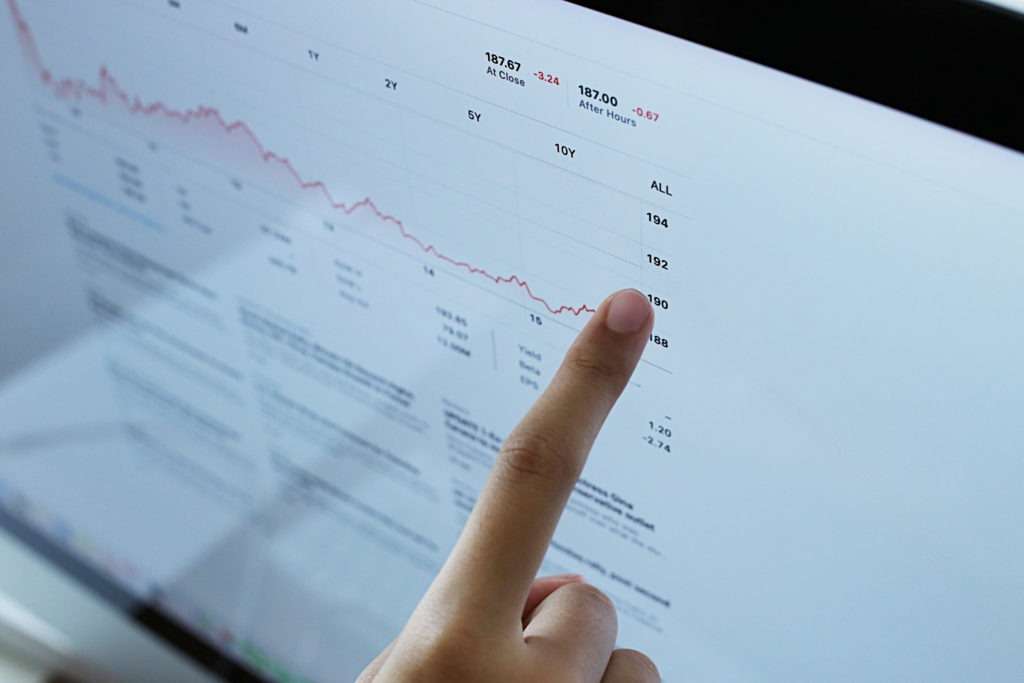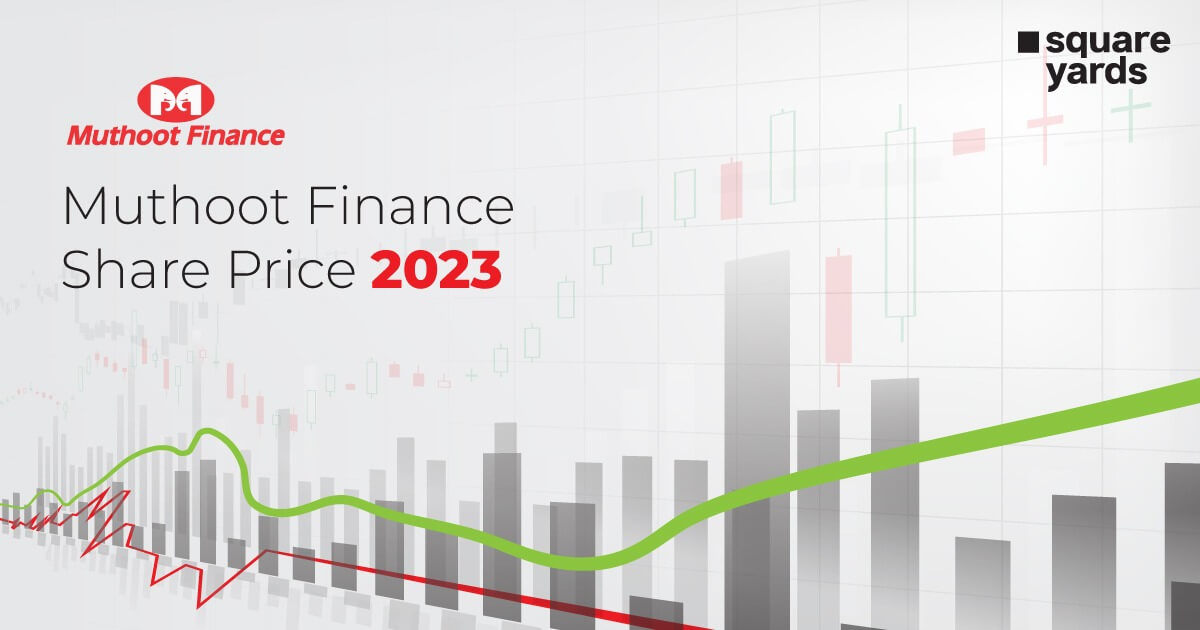Intraday trading ain’t no cakewalk. You need the right tactics, a lot of research on stocks and market performance, and deep insight into how the market works. Believe me! It’s the only way to survive as an intraday trader in the stock market.
It’s true that this kind of trading can bring you a lot of money but this statement holds true only when either you are an expert or when you follow the right intraday trading tips.
So, are you thinking- whether you can make it as a beginner into the market or not? Fret not! We have designed this blog in such a way that any novice trader can read, understand, and start trading straight away. But hey, don’t forget that you will need a Demat or Trading account for that.
So, enough of opening lines here. Right? Let’s get straight to the main topic of this content. Let’s start with the definition of Intraday Trading.
 Investors are pointing at a computer monitor. With a stock chart showing intraday price movements
Investors are pointing at a computer monitor. With a stock chart showing intraday price movements
What is Intraday Trading?
Intraday means within the day. However, in the financial world, the term is used to demonstrate securities trading on the stock market during regular business hours. Such securities consist of stocks and ETFs (Exchange-traded Funds).
Intraday trading is called day trading as the buying and selling of stocks and other financial instruments take place within the same day. In other terms, intraday trading signifies that before the market closes, all the positions are squared-off. Moreover, there’s no alteration in the ownership of the stocks.
Intraday also represents the highs and lows that the stock crossed throughout the day.
Top Intraday Trading Indicators
When you step into trading, you engross yourself in analyzing various charts and graphs. You make decisions based on different patterns and indicators.
Irrespective of whether you are an amateur or an experienced trader, indicators will always play a significant role in market analysis. They render useful information about market trends and help you get better returns.
There are different types of indicators and each holds a special significance. Read on to know what they are:
Trend
Trend, as the name suggests, indicates the ongoing trend in the market. In other words, it refers to the direction in which the market is moving. Typically, oscillators are the trend indicators as they oscillate between high and low values.
Momentum
Momentum indicators signify the trend’s strength and also flag whether there would be any reversal. RSI (Relative Strength Index) is one momentum indicator used for indicating the price bottom and top.
Volume
The volume indicators indicate the change of volume with time. It also represents the number of stocks sold and bought over time. When the price varies, the volume signifies how strong the move is. On-balance volume is an example of a volume indicator.
Volatility
It’s one of the most prominent indicators of all. It represents the extent of price changes in record time.
High volatility means big price moves, while lower volatility means high big moves.
Moving Average
It’s one of the most commonly used trading indicators that offer information about the momentum of the market, trends in the market, the stop loss the reversal of trends, the stop-loss points.
The moving average helps traders discover the trading opportunities in the direction of the current market trend.
Bollinger Bands
Bollinger bands tell you about the volatility in the market. It’s of three types: a) a middle bang- a 20-day simple moving average,
- b) a +2 standard deviation upper bang, and
- c) a -2 lower band.
The stock’s price fluctuates between the lower and the upper band. When the market moves and the volatility is high, the band widens. However, the gap decreases when the volatility is low.
In short, this indicator helps you understand the price changes of a specific stock.
Relative Strength Index (RSI)
The RSI or Relative Strength Index is an example of a momentum indicator (as we have discussed above). It’s a single line that ranges from 0 t0 100. It represents when the stock is oversold or overbought in the market.
If the reading reads above 70, it means that it’s an overbought market, and if the line reads below 30, it means that it’s an oversold market.
RSI is also helpful in determining the market’s trend. If the relative strength index goes beyond 50, it means it’s an uptrend. On the other hand, if the RSI goes below 50, it means it’s a downtrend.
Commodity Channel Index
CCI or Commodity Channel Index determines new trends in the market. It comprises the value of 0, +100, and -100.
The positive value indicates an uptrend, while the negative one shows that the market is experiencing a downtrend.
When you combine CCI with the RSI, you can obscure information about oversold and overbought stocks.
Intraday Trading Strategies: How to Do Intraday Trading?
Here are some of the best rules for intraday trading that any successful trader will follow:
1. Plan Out Trading Tactics
Day trading and investment trading are quite distinct from each other. So, before delving yourself into trading, find out which format will suit you the best. If you choose day trading, it means you have to allocate time to check the market condition daily.
You have to set some rules related to the entry and exit from the trade, the number of trades in a day, the type of stocks to trade, and more. Similarly, you have to plan various things in advance. Doing so will let you upgrade your future trading tactics.
2. Pick Up Stocks having High Liquidity & Less Volatility
Not every stock is great for day trading. Therefore, before you start trading you must ensure the following about the stock:
- The stock must be of high liquidity so that it can easily convert into cash.
- It must be less volatile and more stable so that you don’t incur any big losses.
- Choose stocks that you are most informed about. This will help you play on your strengths and concentrate on that specific industry for better returns.
- You must follow the patterns of different stocks and ensure that you invest in those that connect well with other stocks.
3. Register Your Profits and Losses
The market is quite volatile and should be your strategy. We mean you cannot apply a similar tactic every time and expect a medal. You can evaluate your tact on a daily or weekly basis.
The prime motto is to discover what worked out and what didn’t. It will help you determine the gaps in the tactics and improve future trades with ease.
4. Keep Your Emotions and Business Separate
As you know, the stock market is quite volatile, and hence, there’s a possibility that you can experience significant losses in a short time. Therefore, you must keep your emotions under control in case you are a good trader. You must not be too disheartened by losses or over-excited by profits.
Emotions often guide you to make bad decisions. So, a day trader must be alert and make decisions free of emotions.
5. Book Profits Instantly
In the stock market, the table can turn around at any moment. Once you begin to swell profits, you must act wisely and exit the position immediately. Day traders should keep themselves prepared to make moves before the price reversal.
Here are a few basic rules that day traders must consider:
- Book profits at or slightly beyond the previous high if you have acquired a long position.
- Root for the previous low or slightly below it during exiting, in case you have got a short position.
6. Follow the Day’s Trend
The intraday markets keep fluctuating throughout the day. As a day trader, you must follow the waves.
- Day traders screen stocks that could show a strong uptrend. These come with a higher potential for profit and lower risk.
- On the other hand, the traders turn their focus to declining stock when the market goes bearish. It’s always recommendable to short-sell stocks that are falling faster than the market itself.
Nevertheless, the intraday traders must keep a close eye on the chosen stocks. It helps you determine if any price reversal is about to happen. You must also know when to sit tight. For example, predicting the momentum of a stock when the market is volatile is quite tough.
7. Do Your Research before Trading
Diligent and thorough research is a key to day trading success. A seasoned day trader is more likely to conduct technical analysis, study indicators and price charts before trading. But you should know that the fundamentals of the stocks are equally important. They trade too.
You require a better understanding of how their business is performing. Corporate earnings reports and action announcements may tell you enough of the story.
Besides, day traders must also keep a close eye on the daily news- specifically when it affects certain sectors or industries.
8. Trade Money that You aren’t Afraid to Lose
A wise day trader will opt to buy and sell depending on the limit day trading rules they had set up initially. Once the limit price is triggered, the trader will initiate transactions rather than being fascinated by the market orders.
9. Be Prepared Even for the Worst-Case Scenario
You know that the stock market is highly volatile. Right? If so, then you must also understand that there could be times when things could go south. As a result, you may incur significant losses. AlthoughAlthough you can avoid massive losses if you are ready for such cases in advance.
Intraday traders using margin trading pay a small fragment of the trading amount. The rest is covered by their broker through margin funds. Therefore, the intraday traders are capable of taking a bigger position. This surely does have a higher profit potential but also includes the risk of big losses.
10. Fix the Entry, Exit, and Stop Price
Selecting the appropriate value for entry and exit from stock could be one of the most significant intraday trading rules a trader can set. Traders should also fix an escape value for an emergency. By doing so, they can avoid big losses and mitigate the temptation for bigger profits, which often results in destruction.
Examples of Intraday Trading
Suppose that you bought 1000 shares of the Tata Consultancy Services (TCS) during open market hours. You should, on an intraday trade, sell these stocks of TCS before the market closes.
Likewise, if you had shorted the stocks or sold them before buying, you would have to purchase those same 1000 shares of stock before the market closes.
In online trading platforms, the traders must explicitly specify the intraday transaction made while placing the order. Nevertheless, while buying, you can always change it to ‘delivery trades’ later, prior to the market closing.
In most cases, if you don’t transact the stocks as per rules before the day ends, the stocks will automatically square off.
Example of a Limit Order in Intraday Trading
A trader has a stock with a current price of ₹ 500. He places a stop order to direct the broker to trade the stock for ₹ 450.
If the price comes down to ₹ 450 or even lower, the stop order executes as a market order to sell the stock.
As a result, the stock automatically gets sold at the best available price during the trade.
Intraday Trading Charges
The day trading charges differ from brokers to brokers. You can check the trading charges for intraday trading directly from the official website of Zerodha, Upstox, Groww, etc.
Benefits of Intraday Trading in India
Intraday trading is all about generating profits from various trades in a short time. But that’s not just it. Go through the pointers below and find out how beneficial it could be.
1. Renders Higher Returns
If you amalgamate the notion of intraday with an effective trading tactic, you can earn excellent profits in a short time. But, again keep it in mind that the key here is to implement better strategies that you create while trading.
2. No Overnight Risk
One of the major benefits of intraday is that there’s no overnight risk. All the day traders have to close the position before the end of the day to ensure that profitability remains unaffected by the movements or even that occurs during the period. Therefore, any stock market catastrophe, be it local or global, affects your profits on that specific day.
3. Great Opportunity to Learn
Nobody can deny the fact that day trading offers an invaluable platform to learn, investigate, and apply different trading strategies in a short period. In turn, it allows you to examine the tactics and then identify the one that suits you the best.
4. Fourfold Leverage
One of the best things about day trading is that you can begin your trading journey with little capital. Additionally, various brokers have a special quadruple leverage benefit for seasoned brokers who have millions or more in their recorded trading accounts.
Last but not least, if you are a disciplined trader, you must use result-oriented intraday trading tips. It will surely revert you with desirable returns and excellent rewards.
Disadvantages of Intraday Trading
You can surely make big money in a short time. But the fact is, no such thing comes risk-free. Hence, intraday trading also has some cons that every day trader must know and be cautious:
- With money pouring faster, there’s a high probability of losing money at the same pace. Hence, you don’t have any fixed salary on which you can rely.
- Whether you are overconfident about a few good trades or losing money, it might affect you psychologically. As a result, you can lose your health.
- No titbits or tips from the WhatsApp group can lead you to success. Therefore, you must understand structures and works on charts, patterns, and graphs. It’s also recommendable to learn to put your trades individually.
- When the market is bullish or trending strong, it could be tough to generate massive returns.
- You may face huge losses if you ignore your trading plan and diary.
- In case the market makes a medium-term counter-trend move, you can end up losing money on all your positions.
- You need to pay constant attention to the stocks.
- Unlike in delivery trading, intraday doesn’t offer any bonus benefits or dividends.
Therefore, make the right strategy before you start trading. Also, ensure that you have enough for day trading.
Now that you are familiar with the pros and cons of day trading, let us find how it differs from trading Delivery trading.
Difference between Day Trading and Delivery Trading
Day trading and delivery trading differ from each other on various grounds. Some of them are as follows:
only one side of the transaction (buy or sell) is executed in one day. Let us look at the difference between intraday and delivery trading in more detail.
| Intraday Trading | Delivery Trading |
| Buying and selling are both done on the same day. The net holding position becomes zero when the market closes. | You can execute only one side of the transaction in a day- either buy or sell. Hence, your net holding position won’t be zero. |
| Focus solely on stirring capital | Focus on value or growth |
| Brokerage and lower margins | The complete amount payable on T+1 |
| The debit of profit/loss/EOD Credit | Bank/credit/debit to Demat |
| Technical analysis is employed to choose stocks. | Fundamental analysis of the stock is more suited for a long-term investment. |
Intraday Trading vs Option Trading
Just like day trading differs from delivery trading, it is also different from options tradings.
As you know, in intraday trading, you have to buy and sell stocks on the same day. In options trading, you can buy or sell shares of the stock on or before the predetermined date.
After all the differences and other things we studied above, let us have a look at some stocks that are at the top.
|
Note: We aren’t any financial advisors. The information provided above is based on our personal findings and researches for the mentioned above. We won’t be responsible for any profit or loss incurred. |
You May Also Like
| Market Capitalization | Coin Market Capitalization |
| BSE India | NSE India |
| Equity Shares | Intraday trading in India |
Frequently Asked Questions (FAQ)
Can I sell intraday share the next day?
No, the intraday shares are supposed to be sold the same day or the broker will automatically square it off before the market closes.
What are the new SEBI rules for intraday trading?
As per the recent norms, the market participants would have to spend more towards margins. Moreover, instead of 75%, the intraday traders now have to pay complete i.e. 100% upfront margin.
Is intraday trading profitable?
Yes, if done the right way with powerful tactics, day trading could be extremely beneficial.
What is an intraday trading example?
A trader has a stock with a current price of ₹ 500. He places a stop order to direct the broker to trade the stock for ₹ 450.
If the price comes down to ₹ 450 or even lower, the stop order executes as a market order to sell the stock.
As a result, the stock automatically gets sold at the best available price during the trade.
Is intraday trading safe for beginners?
Whether you are a beginner or not, you must know that intraday trading always entails a high level of risk. Hence, it is not safe, especially for beginners. Try only when you are good with the concept
Can we trade Intraday?
Absolutely, you can trade Intraday as that’s what it is for.
Which is better intraday or delivery?
Saying that one is better than another would be quite unfair. Both of them are better than the other at some point. For instance, if you are looking for low brokerage charges, intraday trading would be better. Plus, intraday needs you to check on the market conditions daily. However, if you aren’t able to monitor daily market movements and want a big profit in a long term, delivery trading can prove better.














































